The Constitution of the Russian Federation has fundamental differences from previous laws. At present, it reflects new guidelines and values of socio-economic and political development. At their center are freedoms and human rights. The Constitution of the Russian Federation is formulated taking into account the principles of humanism, freedom and independence, representative forms of government separation of power. Next, we consider in more detail what constitutes the Basic Law.
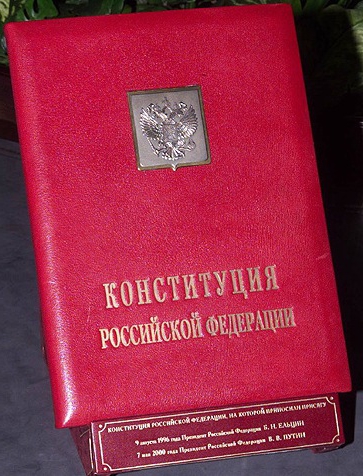
General information
The current Constitution of the Russian Federation is used by all courts of the country. On the basis of the basic law, the existing system of forming public power is built, mechanisms are in place to prevent the revival of the totalitarian regime in the state and society, and to help protect the civic position from encroachments of the state.
The Constitution acts as a genuine source of law. Today, the Basic Law is one of the most significant tools used in the implementation of economic and political reforms, the formation of market relations, and civil society.
Prerequisites for creating a new project
It is known that the Constitution that existed before 1993 belonged to a different time. It was approved back in 1978. In fact, it was a "cast" of the Basic Law of the 77th year. The previous document secured the leading role of the CPSU, the inadmissibility of creating private property and the absolute nationalization of the economic sphere. At the same time, federalism was proclaimed as a principle, but it did not receive its further development. Management of state affairs was carried out through the command and administrative apparatus. There was a substitution of the law with "telephone law", instructions, orders.
Declaration of sovereignty
It was approved at the First Congress of People's Deputies. The Declaration stated that the sovereignty of the RSFSR is proclaimed in the name of the realization of higher goals. They considered ensuring each citizen the inalienable right to free development, a decent life, and the use of his native language. Moreover, the people as a whole got the opportunity to self-determine in their chosen national-state and cultural forms.
The adoption of this Declaration is considered the starting point in the preparation of the draft new Constitution. At the First Congress of People's Deputies, the corresponding Commission was formed. Then its head was B. Yeltsin. At the Fifth Congress, the new draft was noted. The Commission was instructed to finalize it, taking into account the comments and suggestions of people's deputies, and submit it to the next Congress. At the same time, the country continued its life according to the old Constitution, the provisions of which were increasingly at variance with the transformations that were carried out in the state.
To eliminate direct contradictions and inconsistencies arising, amendments and additions were made to the Basic Law gradually. They significantly influenced the content of the Constitution. As a result, the total number of amendments exceeded 300. However, it became clear that it was not possible to solve the tasks of constitutional reforms in this way. Difficulties arose mainly in connection with the hasty and massive amendments. This gave rise to inconsistency of ideas and inconsistency of many articles in the text of the document itself. Often, ambiguities became critical.
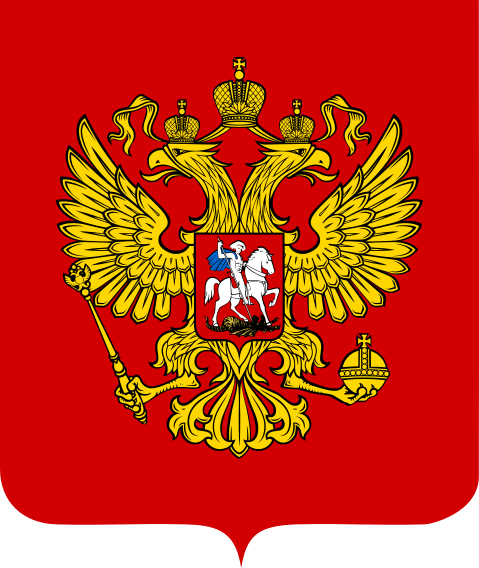
Modern realities
Today, when the country moves to a new system, a lot of acute conflicts and crisis situations appear. The study and analysis of social contradictions manifested in legal forms, including, is becoming increasingly relevant. These phenomena fully affect modern Russian constitutionalism.
It becomes very obvious that the degree of reality of the democratic principles proclaimed by the Basic Law, the effectiveness of regulation are determined in many respects by the depth of its penetration into the nature of conflicts and social contradictions of the modern state and society.
Constitution of the Russian Federation: latest revision
The draft Act in force is the result of joint long-term work of deputies and representatives of state authorities at various levels. Members of several public associations business, as well as prominent lawyers. The project was very widely covered in the media and was subjected to comprehensive consideration at the Constitutional Council. Such a large-scale discussion was due to the fact that it affected all sectors of society in the country. Only after completing all the preliminary work, the project was submitted for public discussion. It was announced by the President of the Russian Federation. The constitution after the vote was approved by citizens.
Characterization of the Basic Law
The Constitution, performing a regulatory function, is designed to ensure the internal integrity of the norms of the domestic legal system. Together with this, it should contribute to the establishment of effective interaction with foreign legislative structures. The Constitution exhaustively defines the list of basic normative acts. In particular, it includes laws on the judicial system, the procedure for the functioning of the Government of the country in a state of emergency, and so on. There are 14 of them.
The Constitution of the Russian Federation (latest edition), fixing the basic laws, the circle of relations that they regulate, consolidates their central position in the current legislation. Along with this, they acquire special legal force. The adoption of the Constitution of the Russian Federation is carried out according to a complicated procedure. To approve the Basic Law, at least 3/4 of the votes of all members of the Federation Council is required.
Strengthening the position of the Constitution in the country's legal system is also greatly facilitated by the fact that the President cannot veto it. In its structure, the Basic Law is a “code”. However, this does not mean that its regulation of existing state-legal relations can be considered exhaustive. In this regard, some authors use a slightly different wording that characterizes the Basic Law - “code-based document”.
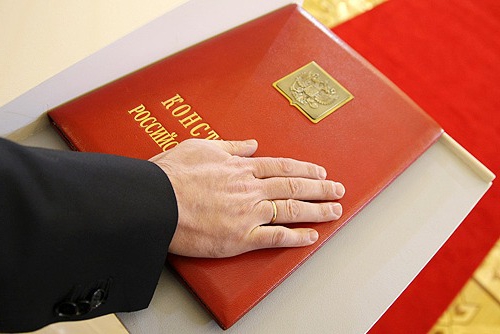
Monopoly
The essence of the Constitution of the Russian Federation is connected with the nature of the state system that is being formed in the country. Until recently, similarly to the Soviet and post-Soviet periods, development was carried out within the framework of "monopoly". This means that the Constitution is a single, integral structure. Any additions and corrections made by law were certainly incorporated into its text.
Here is a good example. In particular, we can say about the adoption of laws on the addition and amendment of the Constitution of 1989-93. Significant amendments were introduced in 1992 during the VI Congress of People's Deputies. This order existed until the end of September 1993. The Congress of People's Deputies could make additions and changes by law, with the consent of at least 2/3 of the total number of deputies. The same procedure was followed when making decisions on suspension of actions of certain parts of the Constitution, delegation of authority to the Supreme Council from the SND.
In the whole system of monopoly law that existed before a certain period in the country, there were two exceptions.In this case, the Declaration on the Sovereignty of the Russian Federation (dated July 12, 1990) and the freedom and independence of citizens (dated November 22, 1991) were vested with constitutional significance. Many prescriptions of these sources were of particular importance in the establishment of democratic statehood in the country. Freedoms and human and civil rights, thus, were elevated to the category of the highest values of society and government. In this regard, they were incorporated into the text of the Main Law.
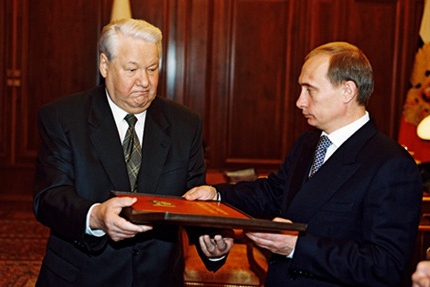
New system
The content of the Constitution of the Russian Federation governs the establishment of a regime that presupposes the existence of, as a matter of fact, the Basic Law itself and a set of requirements of federal significance. The latter are formulated in accordance with the issues provided for in the project, supplement and develop it.
The law is considered adopted with the approval of a majority of at least 3/4 of the total number of members of the Federation Council and at least 2/3 of the total number of deputies of the State Duma. After approval within 14 days, it is subject to signing by the representative of the supreme authority. He is the President. After that, the law will be made public. The content of the Constitution of the Russian Federation provides for the approval of laws such as, for example:
- About the procedure according to which the status of a subject of a country is changed.
- On the national anthem, coat of arms and flag and the rules for their use.
- About the judicial system and others.
The provisions of the Constitution of the Russian Federation in Ch. 1, 2 and 9 can be adjusted not by FS. To make changes there is a newly formed body. It is the Constitutional Assembly. Moreover, adjustments are approved if there is approval of a decision of 3/5 of the total number of FS members and State Duma deputies. Adoption of Amendments to Ch. 3-8 is carried out in accordance with the procedure provided for the introduction of constitutional federal law. They come into force after they are approved by representatives of legislative bodies from at least 2/3 of the country's subjects.
Adoption of the Basic Law
The adoption of the Constitution of the Russian Federation was implemented, as indicated above, by means of a popular vote. Until that moment, the Basic Law of the 78th year was in force in the country. The new project was approved in 1993, December 12th. The new project has its own characteristics that significantly distinguish it from the previous ones.
The features of the 1993 Constitution of the Russian Federation primarily consist in the fact that it acts as the Basic Law of a truly sovereign, independent state, and its adoption is associated with the revival of independence and the inviolability of a democratic foundation. Of course, this project does not have a constituent character. The chapters of the Constitution of the Russian Federation do not form a new state - it existed earlier in different borders under various forms of government for many centuries. The Basic Law emphasizes the idea of preserving historical unity. At the same time, the articles of the Constitution of the Russian Federation distinguish it from the requirements of a similar rank. They reflect its connection with the new era in the history of the country.
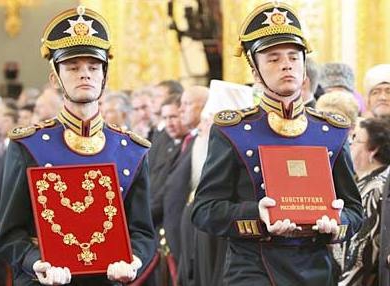
Features of the Constitution of the Russian Federation
In its structure, the Basic Law is close to a similar kind of documents traditionally present in democratic countries. Most of them reflect the desire to coordinate the activities of all levels of government in the state. At the same time, the aim is simultaneously to establish the real priorities of each branch, taking into account the specifics of the formed political relations at a certain historical stage in the formation and development of the country.
Assessing the position of the President, the Government, the Federal Assembly, many political scientists and lawyers find analogues in foreign laws. The resemblance to the French Constitution, which was adopted in 1958 in a referendum, is quite obvious. It should be noted that her concept was defined at that time by C. de Gaulle. He was, as you know, the president of France.De Gaulle's influence on the formation of the Constitution was mainly due to the need to have considerable personal power, which would be able to ensure the country's exit from the crisis that prevailed in those years. Nevertheless, with the external similarity of the power formulas, there are quite obvious differences in the practice of their application.
Key Features of the Law
First of all, it is worth noting that in its modern meaning, the Constitution acts as an act approved by the people and on its behalf. It is noteworthy that the very fact of the emergence in the 17th century of the idea of the need for such a document was connected precisely with this feature. Even today it is recognized as dominant in the theory and practice of lawmaking.
Thus, it is no coincidence that the beginning of the Basic Laws of most democratic countries is: "We, the people, proclaim (establish, etc.) the present Constitution." Another quite significant feature of the document is its constituent character. It is due to the peculiarity of the subject adopting the Constitution. Due to the fact that people are the bearers of sovereignty in the country, and it is considered source of power then only he has its highest manifestation. This means that he has the right to adopt the Constitution, to approve through it the new foundations of statehood, which he chooses. Only with constituent power can the existing foundations of the political and social regime be changed, even in the most radical way. The manifestation of this trait is also seen in the fact that the chapters of the Constitution of the Russian Federation act as the primary principles. They are considered source.
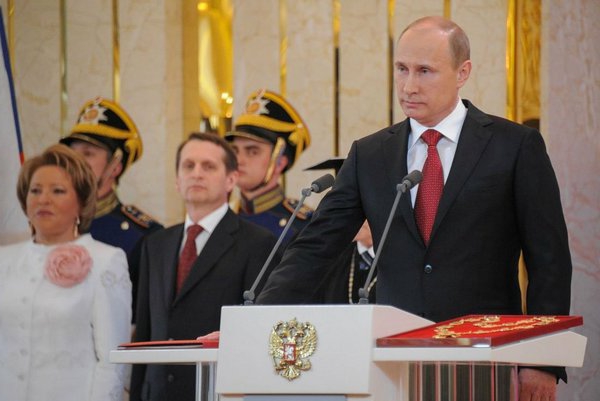
Subject of regulation
In this case, we are talking about the specifics of the level of social interactions that are governed by the Constitution of the Russian Federation. Normative acts affect all spheres of social life. This is primarily an area of economic, political, spiritual, social relations. In these areas, the norms of the Constitution of the Russian Federation regulate the fundamental, basic foundations of interaction between subjects.
Legal Properties
They are considered derived from the above traits. Legal properties that have articles of the Constitution of the Russian Federation are expressed in:
- Rule of Law.
- The role of the Constitution as the center of the state legal system.
- Special protection of the Basic Law.
- The specific procedure for revising and approving a document, amending it.
The country's constitution is a normative act with the highest legal force, fixing the basis of the constitutional system, the foundation of the legal status of a citizen and a person, the country's structure, the principles of organization and functioning, as well as the entire structure of local and state authorities.
Compliance with the current situation
Speaking about what are the features of the Constitution of the Russian Federation, one cannot but mention its adequate character. The Basic Law reflects the transition processes occurring in society, the inconsistency of its existence as a whole. The articles of the Constitution of the Russian Federation embody everything that the multinational people have achieved and defend. This, in particular, a variety of forms of ownership, freedom of economic relations, ideological and political pluralism, competition. This list should, of course, include recognition of the freedoms and rights of a citizen and a person, an independent status local government systems federal structure, which is based on the equal rights and self-determination of the people. Prescriptions in the Basic Law are abstract in nature. This is due to the fact that their goal is to consolidate the most important moment in certain social relations.
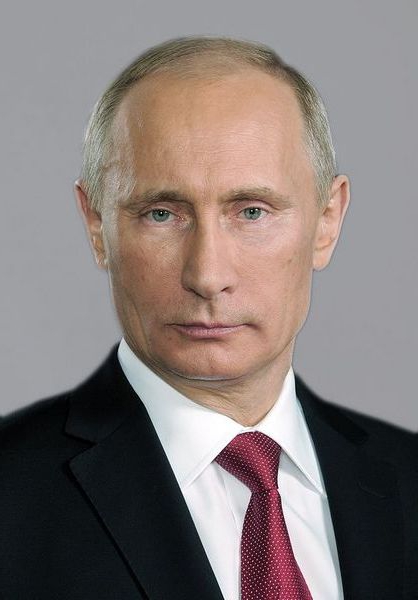
Specificity
Features of the Constitution of the Russian Federation reflect its place in the legal system. Through them, the specificity of the mechanism for regulating relations in society is expressed.The main features of the Constitution of the Russian Federation are its continuity, prospects, legitimacy, stability, supremacy. As mentioned above, the specificity of the procedure for approving and amending a document is of particular importance.
The legitimate character possessed by 1 Constitution of the Russian Federation is that it was approved at a popular referendum. It was held for the first time in the entire history of Russia. Citizens of the country would be provided with a draft proposed by the Head of State and approved at the Constitutional Meeting. The new Fundamental Law, more consistently than in the previous ones, indicates the presence of a subject - the people. The document acts as a kind of model for regulating modern relations. It is in this connection that a prognostic character is also inherent in it, which is reflected in such a trait as prospects. Therefore, together with the consolidation of the achieved results, the Fundamental Law sets goals and aspirations, which are the tasks for the future.
The continuity of the Constitution is determined by the continuity of the historical formation of the state system. The core in this case is again the people, as well as unity and power. The preamble contains the idea of continuity. It expresses the desire of the people to maintain the historically established state unity, the inviolability of the democratic system. An important feature that the Law has in its Foundation is its reality. The main criterion for evaluating this feature is the compliance of the document with reality. If the existing situation and the Basic Law are in unity, while ensuring compliance with the economic and social requirements of the formation of society, then we can no doubt talk about the reality of the document. Unlike previous projects, the new edition is closest to reality.
Finally
Unlike existing ordinary laws, constitutional provisions are durable and stable. These characteristic features of the requirements contained in the document are due to a number of circumstances. First of all, it is worth noting that, due to the abstract content of the provisions of the Constitution, they are not subject to constant changes. In addition, the procedure for approving and amending the Basic Law, mentioned more than once, acts as a guarantor of vitality and longevity.
